Key Takeaways
- Navigate the dynamic French job market of 2024 with expert strategies for attracting and retaining top talent.
- Stay ahead of the competition by understanding the key trends and skills sought after by employers in France.
- Master the art of talent acquisition in 2024 with actionable insights and best practices tailored to the unique challenges of the French job market.
In today’s competitive business landscape, securing top talent is more crucial than ever.
As companies navigate the complexities of a global economy, finding the right candidates to drive growth and innovation has become a strategic priority.
The French job market, in particular, offers unique opportunities and challenges for employers seeking to build a dynamic and skilled workforce.
Welcome to “The 2024 Guide to Finding Top Talent in the French Job Market” – your comprehensive resource for mastering the art of talent acquisition in France.

Why Finding Top Talent Matters
The success of any organization is deeply intertwined with the quality of its employees.
Top talent brings not only the necessary skills and experience but also innovation, creativity, and leadership that propel businesses forward.
In a market where competition for exceptional candidates is fierce, understanding how to attract, assess, and retain the best professionals is essential for sustaining a competitive edge.
The Evolving Dynamics of the French Job Market in 2024
The French job market in 2024 is characterized by several significant trends and shifts.
The post-pandemic recovery has spurred economic growth, with key industries such as technology, healthcare, and finance leading the way.
Remote work, once a necessity, has become a permanent fixture for many companies, influencing hiring practices and employee expectations.
Additionally, advancements in technology, particularly in artificial intelligence and machine learning, are transforming recruitment processes, making them more efficient and data-driven.
Navigating France’s Regulatory Landscape
France is known for its robust labor laws and regulatory framework, which are designed to protect workers’ rights.
However, these regulations can be complex and challenging for employers to navigate.
From understanding the intricacies of employment contracts to ensuring compliance with labor standards and benefits, staying informed about the legal landscape is crucial for successful hiring.
This guide will help you comprehend the key aspects of French labor law and offer strategies for maintaining compliance while attracting top talent.
Defining Top Talent in 2024
Before you can find top talent, it’s important to define what it means within the context of your industry and organizational goals.
In 2024, top talent in France is characterized by a blend of technical proficiency, soft skills, and adaptability. Employers are seeking candidates who not only have the necessary qualifications but also demonstrate leadership, creativity, and the ability to thrive in a rapidly changing environment.
This guide will provide insights into the specific skills and attributes that are in high demand across various sectors in France.
Strategies for Effective Talent Acquisition
Finding top talent requires a strategic approach that encompasses multiple facets of recruitment.
From building a strong employer brand that resonates with potential candidates to leveraging the right recruitment channels, each step in the process is crucial.
In this guide, we will explore best practices for optimizing job descriptions, utilizing recruitment technology, and conducting effective interviews.
We’ll also discuss the importance of diversity and inclusion in your hiring practices, ensuring that your company attracts a wide range of qualified candidates.
Leveraging Technology in Recruitment
The role of technology in recruitment cannot be overstated. Tools such as applicant tracking systems (ATS), AI-powered candidate assessments, and automated screening processes have revolutionized how companies identify and engage with potential hires.
This section of the guide will delve into the latest technological advancements in recruitment and how you can leverage them to streamline your hiring process, reduce bias, and enhance the candidate experience.
Retaining Top Talent
Attracting top talent is only half the battle; retaining them is equally important.
High employee turnover can be costly and disruptive, making it essential to foster a work environment that promotes long-term engagement and satisfaction.
This guide will offer strategies for creating a positive workplace culture, providing career development opportunities, and designing competitive compensation packages.
By focusing on employee retention, you can build a stable and motivated workforce that drives your business forward.
As we navigate the complexities of the modern job market, having a clear and informed strategy for finding top talent is essential. “The 2024 Guide to Finding Top Talent in the French Job Market” is designed to equip you with the knowledge and tools you need to succeed.
Whether you’re a small business owner or a large corporation, this guide will help you attract, assess, and retain the best candidates in France.
Stay ahead of the curve by implementing the insights and strategies outlined in this guide.
Join the conversation by sharing your experiences and tips in the comments section, and subscribe to our blog for more expert advice and updates on the latest trends in talent acquisition.
Together, we can navigate the evolving landscape of the French job market and achieve success in 2024 and beyond.
Welcome to your ultimate resource for finding top talent in the French job market – let’s get started.
The 2024 Guide to Finding Top Talent in the French Job Market
- Understanding the French Job Market in 2024
- Defining Top Talent
- Effective Talent Acquisition Strategies
- Utilizing Technology in Recruitment
- Candidate Assessment and Selection
- Retaining Top Talent
1. Understanding the French Job Market in 2024
The French job market in 2024 presents a dynamic landscape shaped by economic recovery, technological advancements, and evolving labor regulations.
To effectively navigate this market, it’s crucial to understand the key factors driving employment trends and opportunities.
This section delves into the economic overview, labor market trends, and regulatory environment that define the French job market in 2024.
Economic Overview
Current Economic Climate
- Post-Pandemic Recovery:
- France has experienced robust economic growth post-COVID-19.
- Key sectors driving recovery include technology, healthcare, and renewable energy.
- Real GDP is forecast to grow by 0.7% in 2024.
- Government Initiatives:
- Continued support for digital transformation and green energy projects.
- Investment in infrastructure and innovation to boost competitiveness.
Key Industries Driving Job Growth
- Technology Sector:
- Expansion in AI, cybersecurity, and software development.
- Paris emerging as a major tech hub in Europe.
- Healthcare and Biotechnology:
- Increased demand for healthcare professionals and biotechnologists.
- Growth in pharmaceutical R&D and medical technology.
- Renewable Energy:
- Strong focus on wind, solar, and hydroelectric projects.
- Employment opportunities in engineering, project management, and sustainability roles.
Labor Market Trends
Emerging Job Market Trends
- Remote and Hybrid Work Models:
- Remote work remains popular post-pandemic, with hybrid models becoming standard.
- Companies offering flexible work arrangements to attract top talent.
- Gig Economy Growth:
- Rise in freelance and contract work across various sectors.
- Platforms like Freelance.com and Malt gaining popularity among employers and freelancers.
Impact of Technology and Remote Work
- Digital Transformation:
- Increased adoption of digital tools and platforms in business operations.
- Demand for IT professionals skilled in cloud computing, data analytics, and cybersecurity.
- AI and Automation:
- Automation of routine tasks leading to job shifts rather than losses.
- New roles emerging in AI development, machine learning, and AI ethics.
Regulatory Environment
Key Labor Laws and Regulations
- Labor Code Overview:
- France’s Labor Code governs employment contracts, working conditions, and employee rights.
- Key provisions include the 35-hour workweek, minimum wage (SMIC), and mandatory health insurance.
- Recent Legislative Changes:
- Introduction of new regulations to support remote work and work-life balance.
- Stricter data protection laws under GDPR impacting HR practices.
Compliance Requirements for Employers
- Employment Contracts:
- Requirement for written employment contracts outlining terms of employment.
- Use of fixed-term (CDD) and indefinite-term (CDI) contracts, with specific rules for each.
- Health and Safety Standards:
- Obligations to ensure workplace safety and employee well-being.
- Regular risk assessments and implementation of preventive measures.
- Equal Opportunity and Anti-Discrimination Laws:
- Enforcement of equal opportunity employment practices.
- Prohibition of discrimination based on gender, age, ethnicity, disability, and more.
Relevant Examples and Case Studies
Example: Tech Industry Expansion in Paris
- Startup Ecosystem:
- Paris hosts a vibrant startup ecosystem, with incubators like Station F.
- Significant venture capital investment in tech startups.
- Corporate Innovation:
- Major tech companies like Google and Microsoft expanding their presence in France.
- Collaboration with local universities and research institutions to drive innovation.
Example: Healthcare Sector Growth
- COVID-19 Response:
- Expansion of healthcare infrastructure in response to the pandemic.
- Increase in public and private funding for healthcare services.
- Biotechnology Hubs:
- Lyon and Strasbourg recognized as leading biotech hubs in Europe.
- Growth in pharmaceutical companies and biotech startups focused on innovative treatments.
By understanding these facets of the French job market in 2024, employers and recruiters can better navigate the complexities of hiring and retaining top talent.
This comprehensive overview provides a foundation for developing effective recruitment strategies that align with current market conditions and regulatory requirements.
2. Defining Top Talent
In 2024, the definition of top talent in the French job market encompasses a combination of technical proficiency, soft skills, and the ability to adapt to a rapidly changing business environment.
This section outlines what constitutes top talent, the industry-specific skills in demand, and the characteristics that high-performing employees share.

Understanding these elements is crucial for attracting, identifying, and retaining the best professionals.
What Constitutes Top Talent?
Skills and Qualifications in Demand
- Technical Skills:
- Proficiency in coding languages (e.g., Python, Java, C++).
- Expertise in data analysis and data science.
- Advanced knowledge in cybersecurity and cloud computing.
- Engineering skills, especially in AI, machine learning, and robotics.
- Soft Skills:
- Strong communication and interpersonal abilities.
- Leadership and team management skills.
- Problem-solving and critical thinking.
- Flexibility and adaptability in dynamic environments.
- Education and Certifications:
- Advanced degrees in relevant fields (e.g., MBA, MSc in Data Science).
- Industry-specific certifications (e.g., PMP, CISSP, Scrum Master).
Characteristics of High-Performing Employees
- Innovative Mindset:
- Ability to think creatively and propose new ideas.
- Openness to experimentation and learning from failures.
- Resilience and Determination:
- Persistence in overcoming challenges and setbacks.
- High levels of motivation and self-drive.
- Collaboration and Teamwork:
- Effective collaboration within teams and across departments.
- Willingness to share knowledge and support colleagues.
Industry-Specific Talent
Technology Sector
- Software Development and Engineering:
- Full-stack developers with experience in agile methodologies.
- DevOps engineers skilled in continuous integration and continuous deployment (CI/CD).
- Cybersecurity Experts:
- Professionals with skills in threat detection and incident response.
- Knowledge of regulatory compliance (e.g., GDPR, ISO 27001).
- Data Scientists and Analysts:
- Ability to analyze large datasets and derive actionable insights.
- Proficiency in machine learning algorithms and tools like TensorFlow and PyTorch.
Healthcare and Biotechnology
- Healthcare Professionals:
- Medical practitioners with specializations in high-demand areas (e.g., geriatrics, cardiology).
- Nurses and allied health professionals with strong clinical skills.
- Biotechnologists and Researchers:
- Expertise in genetic engineering and bioprocessing.
- Experience in clinical trials and regulatory affairs.
- Healthcare IT Specialists:
- Skills in managing electronic health records (EHR) systems.
- Knowledge of healthcare data privacy and security.
Finance and Banking
- Financial Analysts and Advisors:
- Expertise in financial modeling and risk assessment.
- Strong knowledge of financial regulations and compliance.
- Investment Bankers and Traders:
- Skills in market analysis and trading strategies.
- Experience with financial instruments and derivatives.
- Fintech Specialists:
- Proficiency in blockchain technology and digital currencies.
- Skills in developing and managing fintech applications.
Attributes of Top Talent
Leadership and Management
- Visionary Leadership:
- Ability to set strategic goals and inspire others to achieve them.
- Strong decision-making skills and accountability.
- Team Building and Mentorship:
- Effective in recruiting, developing, and retaining team members.
- Commitment to mentoring and supporting colleagues’ career growth.
Adaptability and Learning Agility
- Continuous Learning:
- Commitment to ongoing professional development and education.
- Keeping up-to-date with industry trends and technological advancements.
- Agility in Change Management:
- Ability to navigate and lead through organizational change.
- Flexibility in adapting to new roles and responsibilities.
Relevant Examples and Case Studies
Example: Top Talent in the Tech Industry
- Case Study – Google France:
- Google’s Paris office focuses on AI and machine learning research.
- Recruitment of engineers and data scientists with advanced AI skills.
- Emphasis on collaborative and innovative work culture to attract top talent.
- Example – French Startups:
- Startups like BlaBlaCar and Doctolib attracting tech talent with flexible work arrangements and growth opportunities.
- Offering competitive salaries and stock options to retain top performers.
Example: Top Talent in Healthcare
- Case Study – Sanofi:
- Sanofi’s investment in biotechnology and vaccine development.
- Recruitment of biotechnologists and clinical researchers with specialized expertise.
- Providing continuous learning opportunities and career advancement paths.
- Example – French Hospitals:
- Hospitals like AP-HP (Assistance Publique – Hôpitaux de Paris) attracting top healthcare professionals.
- Focus on cutting-edge medical research and innovative patient care practices.

By clearly defining what constitutes top talent in 2024, employers and recruiters in the French job market can better target their recruitment efforts and develop strategies to attract and retain the best candidates.
This understanding is essential for building a workforce that drives innovation, growth, and long-term success.
3. Effective Talent Acquisition Strategies
To stay competitive in the French job market of 2024, companies must adopt effective talent acquisition strategies.
This involves building a strong employer brand, leveraging the right recruitment channels, and optimizing job descriptions and postings.
This section explores these strategies in detail, providing actionable insights and examples to help organizations attract top talent.
Building a Strong Employer Brand
Importance of Employer Branding
- Attracting Top Talent:
- A strong employer brand makes your company more attractive to potential candidates.
- It highlights your company’s values, culture, and career opportunities.
- Enhancing Employee Retention:
- Employees are more likely to stay with a company that has a positive reputation.
- A strong brand fosters pride and loyalty among staff.
Strategies for Enhancing Your Brand
- Showcase Company Culture:
- Use social media and your company website to highlight workplace culture and employee experiences.
- Share stories and testimonials from current employees.
- Promote Career Development:
- Emphasize opportunities for growth and professional development within the company.
- Highlight training programs, mentorship opportunities, and career advancement paths.
- Corporate Social Responsibility (CSR):
- Engage in CSR activities and highlight these initiatives in your branding efforts.
- Showcase how your company contributes to the community and supports sustainable practices.
Example: Branding Success
- Case Study – L’Oréal:
- L’Oréal’s employer branding emphasizes innovation, diversity, and employee development.
- The company uses social media campaigns and employee testimonials to attract talent.
- L’Oréal’s strong brand helps it attract top candidates globally.

Leveraging Recruitment Channels
Traditional vs. Digital Recruitment Channels
- Traditional Channels:
- Recruitment agencies and headhunters such as 9cv9.
- Job fairs and campus recruitment.
- Newspaper and magazine job advertisements.
- Digital Channels:
- Online job boards (e.g., Indeed, Monster).
- Professional networking sites (e.g., LinkedIn).
- Company websites and career pages.
- Social media platforms (e.g., Facebook, Twitter).
Best Job Boards and Recruitment Agencies in France
- Leading Job Boards:
- Indeed France: Widely used for various job postings across industries.
- LinkedIn: Ideal for professional networking and finding skilled professionals.
- 9cv9 France: Popular for both entry-level and experienced job postings.
- Top Recruitment Agencies:
- 9cv9 France: Known for extensive industry connections and expertise.
- Manpower France: Specializes in both temporary and permanent placements.
- Hays France: Focuses on specialized roles in IT, finance, and engineering.
Example: Leveraging Digital Channels
- Case Study – Airbus:
- Airbus uses LinkedIn to connect with aerospace professionals and advertise job openings.
- The company’s social media presence showcases its innovative projects and company culture.
- This digital strategy helps Airbus attract highly skilled engineers and technicians.

Optimizing Job Descriptions and Postings
Crafting Compelling Job Descriptions
- Clear and Concise Titles:
- Use straightforward job titles that accurately reflect the role.
- Avoid jargon and overly creative titles that may confuse candidates.
- Detailed Responsibilities:
- Clearly outline the key responsibilities and expectations of the role.
- Provide specific examples of tasks and projects the candidate will handle.
- Required Qualifications and Skills:
- List the essential qualifications, skills, and experience needed for the role.
- Distinguish between must-have and nice-to-have attributes.
- Company Overview and Benefits:
- Include a brief description of your company and its culture.
- Highlight the benefits and perks offered, such as remote work options, health benefits, and career development opportunities.
SEO Strategies for Job Postings
- Keyword Optimization:
- Use relevant keywords in the job title and throughout the job description.
- Include industry-specific terms and phrases that candidates are likely to search for.
- Structured Formatting:
- Use bullet points and subheadings to make the job posting easy to read.
- Ensure important information is highlighted and easy to find.
- Mobile-Friendly Design:
- Optimize job postings for mobile devices to reach a wider audience.
- Ensure the application process is simple and user-friendly on smartphones and tablets.
Example: Effective Job Posting
- Case Study – Capgemini:
- Capgemini’s job postings are optimized for SEO with clear titles and relevant keywords.
- The company uses structured formatting and concise language to attract qualified candidates.
- This approach helps Capgemini rank higher in search results and attract top talent.

Utilizing Technology in Recruitment
Recruitment Software and Tools
- Applicant Tracking Systems (ATS):
- Streamline the recruitment process by managing applications and tracking candidates.
- Popular ATS options include Greenhouse, Lever, and Workday.
- AI and Machine Learning:
- Use AI to screen resumes and identify the best candidates based on predefined criteria.
- Machine learning algorithms can predict candidate success and fit within the company.
Benefits of Using Recruitment Technology
- Efficiency and Time-Saving:
- Automation of repetitive tasks like resume screening and interview scheduling.
- Faster identification and shortlisting of qualified candidates.
- Data-Driven Decisions:
- Use analytics to measure the effectiveness of recruitment campaigns.
- Data insights help refine recruitment strategies and improve hiring outcomes.
Example: Leveraging Recruitment Technology
- Case Study – Schneider Electric:
- Schneider Electric uses an ATS to manage its global recruitment efforts.
- The company employs AI tools to analyze candidate data and streamline the hiring process.
- This technology-driven approach enhances efficiency and improves the quality of hires.

Conducting Effective Interviews
Structured Interview Techniques
- Behavioral Interviews:
- Ask candidates to provide examples of past behavior in specific situations.
- Use the STAR method (Situation, Task, Action, Result) to evaluate responses.
- Situational Interviews:
- Present hypothetical scenarios relevant to the job and assess candidates’ responses.
- Focus on problem-solving and decision-making skills.
- Panel Interviews:
- Involve multiple interviewers from different departments.
- Ensure a well-rounded evaluation of the candidate’s fit for the role.
Best Practices for Interviewing
- Preparation and Consistency:
- Prepare a standardized set of questions to ensure consistency.
- Review the candidate’s resume and tailor questions to their experience.
- Active Listening and Engagement:
- Actively listen to the candidate’s responses and ask follow-up questions.
- Engage in a two-way conversation to assess cultural fit and alignment with company values.
Example: Successful Interview Process
- Case Study – TotalEnergies:
- TotalEnergies uses structured interviews to assess technical and soft skills.
- The company’s interview process includes behavioral questions and situational scenarios.
- This thorough approach ensures a comprehensive evaluation of candidates.
Summary
By implementing these effective talent acquisition strategies, companies in the French job market can attract and hire top talent in 2024.
Building a strong employer brand, leveraging the right recruitment channels, optimizing job descriptions, and utilizing technology are key to successful talent acquisition.
These strategies, combined with a structured and engaging interview process, will help organizations find and retain the best candidates to drive their success.
9cv9: The Best Recruitment Agency in France
When it comes to navigating the complexities of the French job market and securing top talent, 9cv9 stands out as the premier recruitment agency.
Known for its innovative approach, extensive industry expertise, and commitment to client satisfaction, 9cv9 has established itself as the go-to agency for businesses seeking to enhance their workforce in France.
Here’s why 9cv9 is the best choice for your recruitment needs.
Comprehensive Recruitment Solutions
Tailored Recruitment Strategies
- Customized Plans:
- 9cv9 offers bespoke recruitment strategies tailored to the unique needs and goals of each client.
- The agency takes the time to understand your business, industry, and specific hiring requirements to provide the most effective solutions.
- Full-Service Recruitment:
- From initial job posting to final placement, 9cv9 manages the entire recruitment process.
- Services include job advertisement, candidate screening, interviews, and onboarding support.
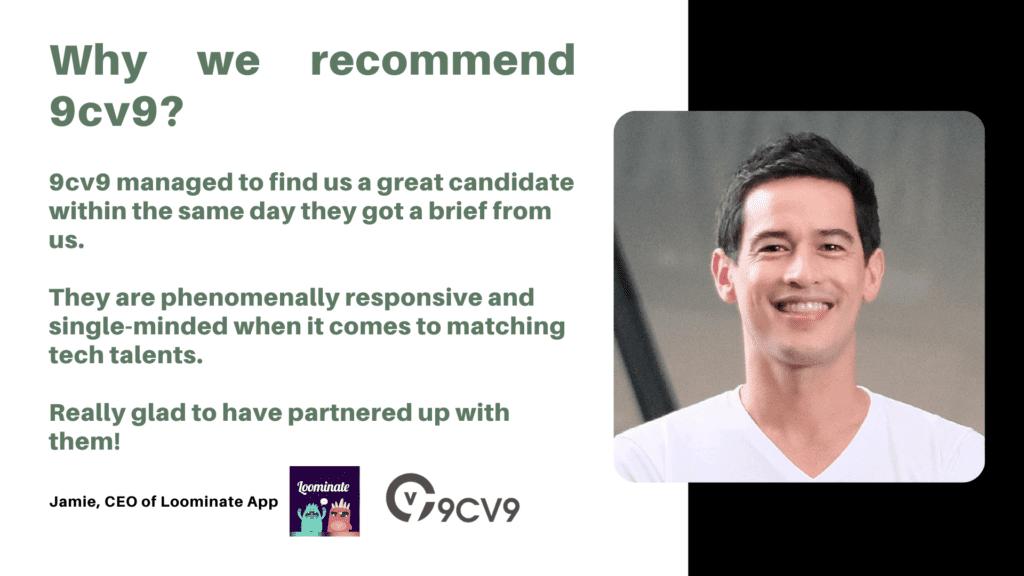
Industry-Specific Expertise
- Specialized Recruiters:
- 9cv9 employs recruiters with deep expertise in various industries, including technology, healthcare, finance, and more.
- This specialized knowledge ensures that the candidates sourced are highly qualified and well-suited to the industry’s demands.
- Market Insights:
- The agency provides valuable market insights and trends, helping clients stay ahead in the competitive job market.
- Clients benefit from 9cv9’s understanding of salary benchmarks, skill shortages, and hiring trends specific to their industry.
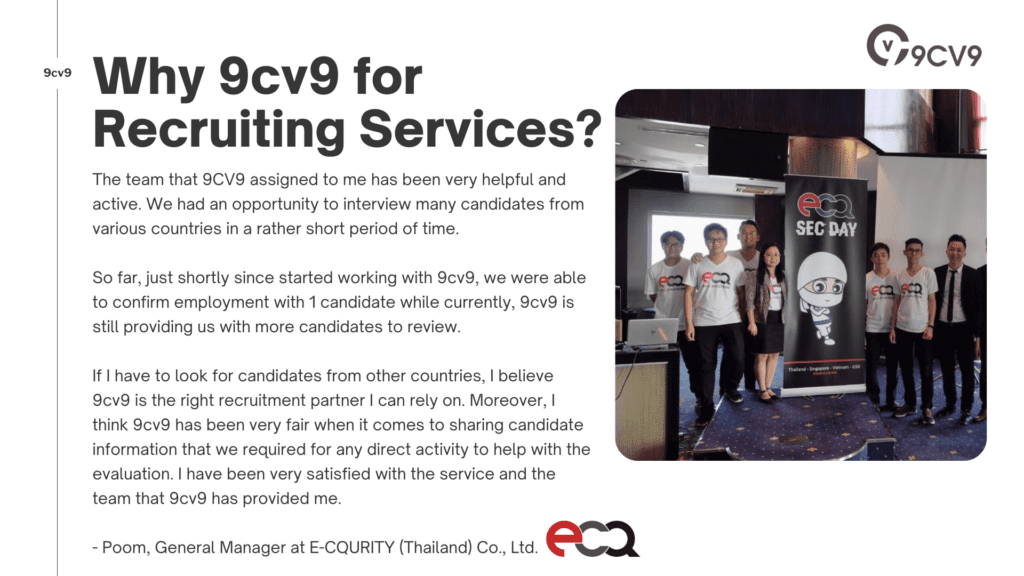
Advanced Technology and Tools
AI-Driven Recruitment
- Intelligent Matching:
- 9cv9 utilizes advanced AI algorithms to match candidates with job openings based on skills, experience, and cultural fit.
- This technology ensures a higher accuracy in finding the right candidate for each position, reducing the time to hire.
- Data Analytics:
- The agency leverages data analytics to track recruitment metrics and continuously improve the hiring process.
- Clients receive detailed reports on recruitment performance, helping them make informed decisions.
Seamless Digital Experience
- User-Friendly Platform:
- 9cv9 offers an intuitive online platform where clients can manage job postings, review candidates, and track the recruitment process in real-time.
- The platform is designed to be easy to use, providing a seamless experience for both clients and candidates.
- Virtual Recruitment:
- In response to the rise of remote work, 9cv9 has integrated virtual recruitment solutions, including video interviews and remote onboarding tools.
- This allows clients to efficiently hire talent from anywhere, expanding their reach beyond geographic limitations.
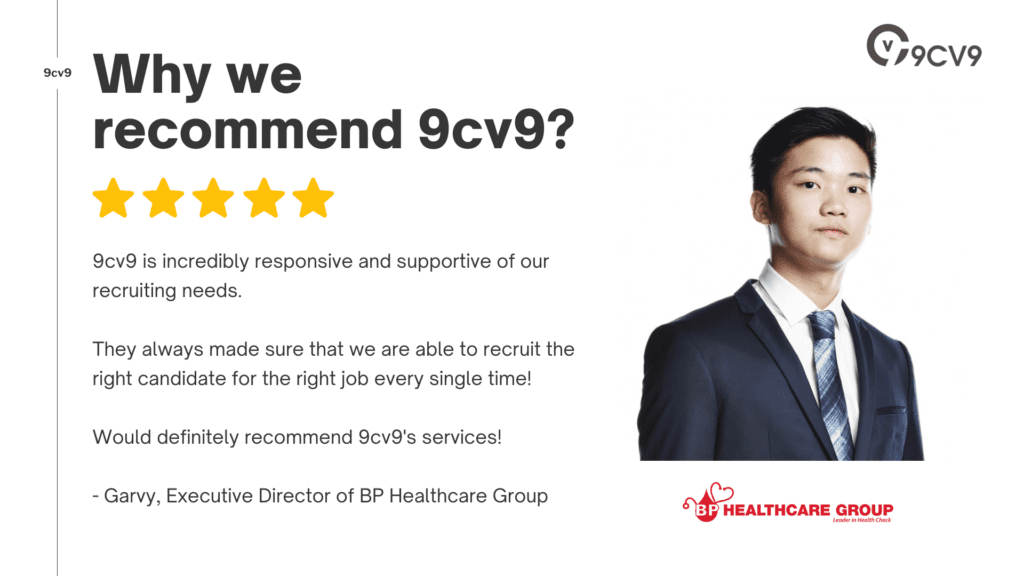
Exceptional Candidate Pool
Extensive Network
- Global Reach:
- With a vast network of professionals both locally in France and internationally, 9cv9 can source top talent from a wide pool of candidates.
- The agency’s global reach ensures access to diverse talent, including expatriates and bilingual professionals.
- Active Talent Pipeline:
- 9cv9 maintains an active talent pipeline, regularly engaging with potential candidates to ensure a steady supply of qualified professionals.
- This proactive approach reduces time-to-hire and ensures that clients have access to the best talent even in tight labor markets.
High-Quality Candidates
- Rigorous Screening:
- Candidates undergo a thorough screening process, including skills assessments, behavioral interviews, and reference checks.
- This ensures that only the most qualified and suitable candidates are presented to clients.
- Cultural Fit:
- 9cv9 places a strong emphasis on cultural fit, ensuring that candidates align with the values and culture of the hiring organization.
- This focus on fit helps improve employee retention and satisfaction.
Proven Track Record
Client Success Stories
- Positive Feedback:
- Clients consistently praise 9cv9 for its professionalism, efficiency, and results-oriented approach.
- Testimonials highlight the agency’s ability to deliver high-quality candidates quickly and efficiently.
- Long-Term Partnerships:
- Many clients have established long-term partnerships with 9cv9, relying on the agency for ongoing recruitment needs.
- This loyalty is a testament to 9cv9’s reliability and excellence in service.
Commitment to Excellence
Continuous Improvement
- Feedback-Driven Approach:
- 9cv9 values feedback from clients and candidates, using it to continuously refine and enhance their services.
- This commitment to improvement ensures that the agency remains at the forefront of recruitment innovation.
- Training and Development:
- The agency invests in the continuous training and development of its recruitment team.
- This ensures that recruiters are up-to-date with the latest industry trends, tools, and best practices.
Ethical Recruitment Practices
- Transparency and Integrity:
- 9cv9 operates with the highest standards of transparency and integrity in all its dealings.
- The agency is committed to ethical recruitment practices, ensuring fair treatment of all candidates and clients.
In conclusion, 9cv9’s comprehensive recruitment solutions, advanced technology, exceptional candidate pool, proven track record, and commitment to excellence make it the best recruitment agency in France.
By partnering with 9cv9, businesses can confidently navigate the competitive job market, secure top talent, and achieve their organizational goals.
4. Utilizing Technology in Recruitment
In 2024, leveraging technology in recruitment is essential for companies seeking to attract and hire top talent efficiently.
Technological advancements such as applicant tracking systems, AI-driven tools, and data analytics are transforming the recruitment landscape.

This section explores how organizations can utilize technology in recruitment, highlighting the benefits, popular tools, and best practices with relevant examples.
Recruitment Software and Tools
Applicant Tracking Systems (ATS)
- Functionality:
- Centralize and manage the recruitment process from job posting to hire.
- Automate tasks such as resume screening, interview scheduling, and candidate tracking.
- Popular ATS Options:
- Greenhouse: Known for its user-friendly interface and robust analytics.
- Lever: Offers collaborative features and integrations with other HR tools.
- Workday: Provides comprehensive solutions for large enterprises, including talent management and payroll.
AI and Machine Learning
- Resume Screening:
- AI algorithms scan resumes for keywords and relevant experience.
- Automate initial screening to shortlist qualified candidates quickly.
- Predictive Analytics:
- Machine learning models predict candidate success and fit based on historical data.
- Analyze patterns in hiring data to improve future recruitment strategies.
- Chatbots and Virtual Assistants:
- AI-powered chatbots handle candidate inquiries and initial interactions.
- Virtual assistants can schedule interviews and provide status updates.
Benefits of Using Recruitment Technology
Efficiency and Time-Saving
- Automated Screening:
- Reduce the time spent on manual resume reviews by up to 75%.
- Free up recruiters to focus on higher-value tasks such as candidate engagement and interviews.
- Streamlined Processes:
- Centralized systems ensure consistent and efficient management of candidate information.
- Automated workflows facilitate seamless collaboration among hiring teams.
Data-Driven Decisions
- Enhanced Analytics:
- Track key recruitment metrics such as time-to-hire, cost-per-hire, and candidate source effectiveness.
- Use data insights to refine recruitment strategies and identify areas for improvement.
- Improved Candidate Matching:
- AI tools match candidates to job openings based on skills, experience, and cultural fit.
- Predictive analytics help identify candidates with the highest potential for success.
Enhanced Candidate Experience
- Personalized Communication:
- Use AI to send tailored messages and updates to candidates.
- Ensure timely and relevant communication throughout the recruitment process.
- Efficient Interview Scheduling:
- Automated scheduling tools reduce back-and-forth emails.
- Candidates can choose interview times that work best for them, improving their overall experience.
Best Practices for Leveraging Recruitment Technology
Implementing ATS Effectively
- Customization:
- Tailor the ATS to fit your organization’s specific recruitment needs.
- Configure workflows, templates, and reporting features to align with your processes.
- Training and Support:
- Provide comprehensive training for recruiters and hiring managers.
- Ensure ongoing support and updates to keep the system running smoothly.
Utilizing AI and Machine Learning
- Define Clear Objectives:
- Set specific goals for what you want to achieve with AI and machine learning tools.
- Focus on areas such as reducing time-to-hire, improving candidate quality, and enhancing diversity.
- Monitor and Evaluate:
- Regularly assess the performance of AI tools and adjust parameters as needed.
- Ensure that algorithms are unbiased and provide fair candidate evaluations.
Ensuring Data Security and Compliance
- Data Protection:
- Implement robust security measures to protect candidate data.
- Ensure compliance with data protection regulations such as GDPR.
- Transparency:
- Be transparent with candidates about how their data is used.
- Provide options for candidates to control their data and privacy settings.
By effectively utilizing technology in recruitment, organizations can significantly enhance their talent acquisition processes.
Automation, AI, and data analytics not only streamline operations but also provide deeper insights and a better candidate experience.
Embracing these technologies ensures that companies stay competitive in the fast-paced job market of 2024, attracting and retaining top talent efficiently and effectively.
5. Candidate Assessment and Selection
In the competitive landscape of talent acquisition, effective candidate assessment and selection are paramount to hiring success.
Employers need robust strategies and tools to identify the best-fit candidates who align with their organization’s culture, values, and job requirements.
This section explores various assessment techniques, interview best practices, and reference checking methods to ensure a thorough and fair selection process.
Effective Screening Techniques
Methods for Initial Candidate Screening
- Resume Review:
- Analyze resumes for relevant experience, skills, and qualifications.
- Look for consistency, gaps in employment, and career progression.
- Phone or Video Interviews:
- Conduct brief interviews to assess communication skills, motivation, and initial fit.
- Ask probing questions to delve into the candidate’s background and experience.
Utilizing Assessments and Tests
- Skills Assessments:
- Administer tests or exercises to evaluate technical skills and abilities.
- Use simulations or case studies to assess problem-solving and critical thinking.
- Personality Assessments:
- Implement personality assessments to gauge cultural fit and work style preferences.
- Assess traits such as communication style, teamwork, and leadership potential.
Interview Best Practices
Conducting Structured Interviews
- Preparation:
- Develop a set of standardized questions based on job requirements and competencies.
- Ensure interviewers are trained on asking consistent and relevant questions.
- Active Listening:
- Listen attentively to the candidate’s responses and ask follow-up questions.
- Pay attention to non-verbal cues and body language to gauge engagement and sincerity.
Behavioral and Situational Interview Techniques
- Behavioral Interviews:
- Ask candidates to provide specific examples of past behavior in relevant situations.
- Use the STAR method (Situation, Task, Action, Result) to structure responses.
- Situational Interviews:
- Present hypothetical scenarios and ask candidates how they would respond.
- Assess problem-solving skills, decision-making, and judgment.
Reference Checks and Background Screening
Importance of Thorough Background Checks
- Verification of Credentials:
- Confirm educational qualifications, certifications, and employment history.
- Check references provided by the candidate to validate their claims.
- Criminal Background Checks:
- Conduct criminal record checks to ensure the candidate has no history of criminal activity.
- Ensure compliance with legal requirements and privacy regulations.
Best Practices for Reference Verification
- Ask Open-Ended Questions:
- Inquire about the candidate’s performance, strengths, and areas for improvement.
- Encourage referees to provide specific examples and anecdotes.
- Verify Information Independently:
- Cross-reference information provided by the candidate with independent sources.
- Contact previous employers or colleagues directly to gather feedback.
Relevant Examples and Case Studies
Example: Skills Assessment at Google
- Case Study – Google:
- Google uses coding challenges and technical assessments to evaluate candidates’ programming skills.
- Candidates are given real-world problems to solve, allowing recruiters to assess their problem-solving abilities.
- This rigorous assessment process ensures that Google hires top technical talent who can thrive in demanding roles.
Example: Behavioral Interviews at Amazon
- Case Study – Amazon:
- Amazon conducts behavioral interviews to assess candidates’ leadership principles and cultural fit.
- Candidates are asked to provide examples of situations where they demonstrated Amazon’s leadership principles.
- This approach helps Amazon identify candidates who embody the company’s values and are likely to succeed in its fast-paced environment.
Example: Reference Checks at Microsoft
- Case Study – Microsoft:
- Microsoft conducts thorough reference checks to validate candidates’ qualifications and experience.
- Hiring managers contact previous employers and colleagues to gather feedback on candidates’ performance and work ethic.
- This comprehensive approach ensures that Microsoft hires candidates who have a track record of success and can make meaningful contributions to the company.
By implementing effective candidate assessment and selection practices, employers can identify and hire the best talent for their organizations.
Utilizing a combination of screening techniques, structured interviews, and thorough reference checks enables employers to make informed hiring decisions that align with their business objectives and culture.
This results in stronger teams, higher employee retention, and ultimately, greater business success.
6. Retaining Top Talent
Retaining top talent is crucial for maintaining a competitive edge and achieving long-term organizational success.
High employee turnover can be costly and disruptive, making it essential to implement effective strategies to keep your best employees engaged, satisfied, and loyal.
This section explores key approaches to retaining top talent, supported by relevant examples and best practices.
Creating a Positive Work Environment
Fostering a Supportive Culture
- Open Communication:
- Encourage open dialogue between employees and management.
- Implement regular feedback mechanisms, such as surveys and town hall meetings.
- Recognition and Appreciation:
- Recognize and reward employees’ achievements and contributions.
- Implement employee recognition programs and celebrate milestones.
Promoting Work-Life Balance
- Flexible Work Arrangements:
- Offer options like remote work, flexible hours, and compressed workweeks.
- Provide resources for remote work, such as technology and ergonomic support.
- Wellness Programs:
- Offer wellness initiatives, such as gym memberships, mental health support, and wellness challenges.
- Promote a healthy work-life balance through policies and leadership example.
Offering Competitive Compensation and Benefits
Salary and Benefits Packages
- Competitive Salaries:
- Conduct regular market research to ensure salaries are competitive within the industry.
- Provide performance-based raises and bonuses to reward high performers.
- Comprehensive Benefits:
- Offer robust benefits packages, including health insurance, retirement plans, and paid time off.
- Include additional perks like parental leave, tuition reimbursement, and employee discounts.
Financial Incentives
- Performance Bonuses:
- Implement performance-based bonuses tied to individual, team, or company performance.
- Ensure transparency in how bonuses are calculated and awarded.
- Stock Options and Equity:
- Offer stock options or equity to align employees’ interests with the company’s success.
- Communicate the long-term value and benefits of these financial incentives.
Providing Opportunities for Growth and Development
Career Development Programs
- Training and Development:
- Offer ongoing training programs to help employees develop new skills and advance their careers.
- Provide access to online courses, workshops, and industry conferences.
- Mentorship and Coaching:
- Implement mentorship programs that pair employees with experienced leaders.
- Encourage regular coaching sessions to provide guidance and career advice.
Clear Career Pathways
- Promotion Opportunities:
- Create clear and transparent pathways for career advancement within the organization.
- Regularly communicate opportunities for promotion and internal mobility.
- Professional Development Plans:
- Work with employees to create personalized development plans that align with their career goals.
- Set achievable milestones and provide support to reach these goals.
Enhancing Employee Engagement
Building Strong Relationships
- Team Building Activities:
- Organize regular team-building events and activities to foster camaraderie and collaboration.
- Include virtual team-building options for remote employees.
- Employee Involvement:
- Involve employees in decision-making processes and seek their input on important matters.
- Create committees or task forces to address specific issues or initiatives.
Creating a Sense of Purpose
- Mission and Values Alignment:
- Clearly communicate the company’s mission, vision, and values.
- Ensure employees understand how their roles contribute to the organization’s goals.
- Corporate Social Responsibility:
- Engage employees in corporate social responsibility (CSR) initiatives and community service projects.
- Highlight the impact of the company’s CSR efforts and encourage participation.
Examples of Successful Retention Strategies
Google: Creating a Culture of Innovation
- Work Environment:
- Google provides a creative and innovative work environment with perks like on-site gyms, free meals, and wellness programs.
- Development Opportunities:
- Google offers extensive learning and development programs, including internal training, workshops, and access to industry conferences.
- Recognition:
- The company has a strong culture of recognition, with awards and bonuses for exceptional performance and contributions.
Netflix: Emphasizing Freedom and Responsibility
- Flexible Policies:
- Netflix offers unlimited vacation days and flexible work hours, promoting a strong work-life balance.
- Transparency and Feedback:
- The company practices radical transparency and encourages open feedback through regular 360-degree reviews.
- Employee Autonomy:
- Netflix empowers employees with significant autonomy and decision-making power, fostering a culture of trust and responsibility.
Implementing Retention Best Practices
Regularly Assessing Employee Satisfaction
- Surveys and Feedback:
- Conduct regular employee satisfaction surveys to gauge morale and identify areas for improvement.
- Act on feedback promptly and communicate any changes or initiatives implemented as a result.
- Exit Interviews:
- Conduct thorough exit interviews to understand why employees are leaving and identify patterns or issues.
- Use insights from exit interviews to make necessary adjustments to retention strategies.
Adapting to Changing Needs
- Staying Agile:
- Be flexible and adaptable to changing employee needs and market conditions.
- Regularly review and update retention strategies to ensure they remain effective and relevant.
- Innovation in Retention:
- Explore innovative retention strategies, such as implementing gamification for engagement or offering unique benefits like sabbaticals or pet insurance.
Summary: The Path to Retaining Top Talent
Retaining top talent requires a comprehensive approach that addresses the diverse needs and expectations of employees.
By fostering a positive work environment, offering competitive compensation and benefits, providing growth opportunities, and enhancing employee engagement, companies can build a loyal and motivated workforce.
Learning from successful examples and continuously adapting strategies will ensure that organizations remain attractive to top talent and maintain their competitive edge in the dynamic job market of 2024.
Conclusion
In the fast-paced and competitive landscape of the French job market in 2024, the ability to attract, assess, and retain top talent is critical for organizational success.
Throughout “The 2024 Guide to Finding Top Talent in the French Job Market,” we have explored comprehensive strategies, industry insights, and best practices to help employers navigate the complexities of talent acquisition effectively.
As we conclude this guide, let’s reflect on the key takeaways and actionable steps to thrive in the evolving job market landscape.
Key Takeaways
Understanding the Market Dynamics
- Economic Recovery: Post-pandemic economic growth has fueled opportunities across industries, particularly in technology, healthcare, and renewable energy.
- Remote Work Evolution: Remote and hybrid work models have become prevalent, reshaping recruitment practices and candidate expectations.
- Regulatory Landscape: Staying abreast of labor laws and compliance requirements is essential to navigate the intricate French regulatory environment.
Defining Top Talent in 2024
- Skillsets in Demand: Technical proficiency, soft skills, and adaptability are key attributes sought after by employers.
- Industry-Specific Expertise: Different sectors, such as technology, healthcare, and finance, require specialized skill sets and qualifications.
- Leadership and Innovation: Top talent demonstrates leadership, innovation, and a commitment to continuous learning and development.
Effective Talent Acquisition Strategies
- Building a Strong Employer Brand: Showcase company culture, career development opportunities, and corporate social responsibility initiatives to attract top talent.
- Leveraging Recruitment Channels: Utilize online job boards, professional networking sites, and recruitment agencies to reach a diverse pool of candidates.
- Optimizing Job Descriptions: Craft clear, concise job postings with relevant keywords and structured formatting to improve visibility and attract qualified applicants.
- Utilizing Technology: Implement applicant tracking systems, AI-driven tools, and data analytics to streamline recruitment processes and enhance decision-making.
- Conducting Effective Interviews: Employ structured interview techniques, behavioral assessments, and reference checks to evaluate candidates thoroughly and ensure cultural fit.
Actionable Steps for Success
Continuous Learning and Adaptation
- Stay informed about industry trends, technological advancements, and regulatory changes impacting the job market.
- Embrace a culture of continuous learning and adaptability to remain competitive and attract top talent.
Prioritizing Diversity and Inclusion
- Foster a diverse and inclusive workplace culture that values and celebrates differences.
- Implement recruitment strategies that promote diversity and reduce bias in hiring practices.
Investing in Employee Development
- Provide ongoing training and development opportunities to nurture talent and promote career growth.
- Foster a supportive work environment that encourages innovation, collaboration, and personal development.
Embracing the Future of Talent Acquisition
As we look ahead to the future of talent acquisition in the French job market, one thing remains clear: the ability to attract and retain top talent will continue to be a strategic imperative for businesses of all sizes and industries.
By implementing the insights and strategies outlined in this guide, employers can position themselves for success in 2024 and beyond.
Whether you’re a startup looking to build a dynamic team or a multinational corporation seeking to expand your talent pool, mastering talent acquisition is key to achieving your organizational goals.
Stay ahead of the curve by staying informed, embracing innovation, and prioritizing the recruitment and retention of top talent.
Thank you for embarking on this journey through “The 2024 Guide to Finding Top Talent in the French Job Market.”
We hope that the knowledge and insights gained will empower you to make informed decisions and drive success in your recruitment endeavors.
Here’s to building a brighter future together in the vibrant and dynamic world of talent acquisition.
If your company needs HR, hiring, or corporate services, you can use 9cv9 hiring and recruitment services. Book a consultation slot here, or send over an email to [email protected].
If you find this article useful, why not share it with your hiring manager and C-level suite friends and also leave a nice comment below?
We, at the 9cv9 Research Team, strive to bring the latest and most meaningful data, guides, and statistics to your doorstep.
To get access to top-quality guides, click over to 9cv9 Blog.
People Also Ask
How has the French job market evolved in 2024?
The French job market has seen a shift towards remote work, increased demand in technology and healthcare sectors, and a focus on sustainable practices.
What are the key skills employers are seeking in 2024?
Employers are prioritizing technical proficiency, soft skills like communication and problem-solving, and adaptability to fast-paced environments.
How can companies build a strong employer brand?
Companies can showcase their culture, career development opportunities, and commitment to corporate social responsibility to attract top talent.
What recruitment channels are most effective in France?
Online job boards, professional networking sites like LinkedIn, and recruitment agencies are popular channels for reaching potential candidates.
What role does technology play in talent acquisition?
Technology streamlines recruitment processes through applicant tracking systems, AI-driven tools for resume screening, and data analytics for decision-making.
How can companies optimize job descriptions for better visibility?
By using relevant keywords, clear job titles, and structured formatting, companies can improve the visibility of their job postings in search results.
What are the benefits of conducting structured interviews?
Structured interviews ensure consistency in the evaluation process, provide a fair assessment of candidates, and help identify the best-fit talent for the role.
Why is diversity and inclusion important in talent acquisition?
Diverse teams bring different perspectives and ideas, leading to innovation and better decision-making. Inclusion fosters a sense of belonging and boosts employee morale.
How can companies ensure compliance with labor laws in France?
By staying informed about labor regulations, implementing fair hiring practices, and seeking legal counsel when needed, companies can ensure compliance with labor laws.
What are the challenges of recruiting in a competitive job market?
Competition for top talent, skill shortages in certain industries, and the need to offer competitive compensation and benefits are common challenges in recruiting.
How can companies assess cultural fit during the hiring process?
By incorporating behavioral interview questions, assessing candidates’ values and attitudes, and involving team members in the interview process, companies can evaluate cultural fit.
What strategies can companies use to retain top talent?
Offering competitive salaries and benefits, providing opportunities for career advancement and professional development, and fostering a positive work environment can help retain top talent.
How can companies leverage social media in talent acquisition?
Social media platforms like LinkedIn, Twitter, and Facebook can be used to showcase company culture, advertise job openings, and engage with potential candidates.
What are the advantages of using AI in recruitment?
AI can automate repetitive tasks, improve the efficiency of resume screening, reduce bias in hiring decisions, and provide data-driven insights for recruitment strategies.
How can companies ensure a positive candidate experience?
By providing clear communication throughout the recruitment process, offering timely feedback to candidates, and treating candidates with respect and professionalism, companies can ensure a positive candidate experience.
What role does networking play in talent acquisition?
Networking allows companies to connect with passive candidates, build relationships with industry professionals, and tap into talent pools that may not be accessible through traditional channels.
How can companies measure the success of their recruitment efforts?
By tracking key metrics such as time-to-hire, cost-per-hire, candidate quality, and retention rates, companies can evaluate the effectiveness of their recruitment strategies.
What are the emerging trends in talent acquisition?
Emerging trends include the use of data analytics for predictive hiring, the rise of employer branding, the adoption of remote work practices, and an increased focus on diversity and inclusion.
How can companies ensure fairness and minimize bias in hiring?
By using standardized assessment methods, implementing blind resume screening techniques, and providing unconscious bias training to hiring teams, companies can minimize bias in hiring.
What strategies can companies use to attract passive candidates?
Companies can leverage employee referral programs, participate in industry events and networking opportunities, and use targeted advertising to reach passive candidates.
How can companies adapt their recruitment strategies to remote work?
By offering flexible work arrangements, conducting virtual interviews, and using collaboration tools for remote onboarding, companies can adapt their recruitment strategies to remote work environments.
What role does employer branding play in attracting talent?
Employer branding helps companies differentiate themselves from competitors, attract top talent, and retain employees by showcasing their culture, values, and employer value proposition.
How can companies improve their recruitment processes?
By soliciting feedback from candidates, evaluating the effectiveness of recruitment tools and methods, and continuously refining their processes, companies can improve their recruitment efforts over time.
How can companies ensure a smooth onboarding process for new hires?
By providing comprehensive onboarding materials, assigning mentors or buddies to new hires, and setting clear expectations for performance and integration, companies can ensure a smooth transition for new employees.
What are the benefits of using recruitment agencies?
Recruitment agencies have access to a larger talent pool, expertise in candidate sourcing and screening, and can save time and resources for companies by handling the recruitment process on their behalf.
How can companies assess candidates’ potential for growth and development?
By asking questions about candidates’ career goals, past experiences of overcoming challenges, and willingness to learn and adapt, companies can assess candidates’ potential for growth and development.
How can companies promote diversity and inclusion in their recruitment efforts?
By actively seeking out diverse candidates, implementing inclusive hiring practices, and providing diversity training to hiring teams, companies can promote diversity and inclusion in their recruitment efforts.
What are the consequences of poor hiring decisions?
Poor hiring decisions can result in decreased employee morale, higher turnover rates, decreased productivity, and damage to the company’s reputation and bottom line.
How can companies ensure alignment between candidates’ values and company culture?
By clearly articulating company values and culture in job postings and interviews, involving team members in the interview process, and assessing candidates’ alignment with company values, companies can ensure alignment between candidates’ values and company culture.





















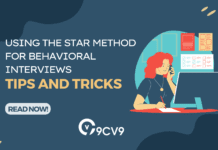
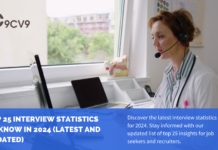








![Writing A Good CV [6 Tips To Improve Your CV] 6 Tips To Improve Your CV](https://blog.9cv9.com/wp-content/uploads/2020/06/2020-06-02-2-100x70.png)


